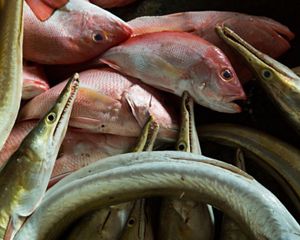FishFace (Fish Facial Identification) Technology Solution for Indonesia Sustainable Fisheries Management

Comprising 17,508 islands, Indonesia forms the largest archipelago in the world. Straddling the equator, the archipelago is on a crossroads between two oceans, the Pacific and the Indian Ocean. Indonesia also forms the heart of the Coral Triangle, the area with the highest diversity of marine biota on Earth. It comes as no surprise that fisheries are important in Indonesia: With an annual catch of 7.1 million metric tons, Indonesia features the world's second-largest fishery after China, accounting for about 7% of global marine capture fisheries.
This high marine biodiversity is also reflected in the species composition of Indonesia's catch: A comprehensive survey of Indonesia's seafood markets resulted in an astounding tally of 873 species (bony fishes only, not counting sharks and rays). This diversity poses a unique challenge to Indonesia's fishery scientists: How to get accurate data on species composition of the catch? Even for experts it is difficult to tell species apart, and it is even harder for field workers. Field workers cannot rely on information from fishers, since they use non-standardized local names, which vary widely between islands. For example, evaluation of species identification training showed that participants had an accuracy rate of about 50% only.
Such mistakes can lead to serious errors: Up until recently one of the most common red snappers, Lutjanus malabaricus, was misidentified as Lutjanus sanguineus, a species from the western Indian Ocean that is not found in Indonesia. Consequently, Indonesia usually reports catch through species categories (e.g., “demersal fish” or “coral reef fish”), which may comprise hundreds of species. This practice severely reduces the value of these data for fish stock assessment, thereby putting at risk sustainability and livelihoods of millions of people.
Species-specific catch assessment is also hampered by the vastness and the complexity of Indonesia’s geography. Indonesia covers three time zones, and fish are landed anywhere along Indonesia’s 54,720 km of coastline. Indonesia has 538 designated small and 7 large fishing harbors, and in addition much of the catch is landed by small boats on beaches and backyard jetties. The logistical challenges of getting trained field workers and observers to landing sites at the right time are enormous, and even just receiving logbooks that are filled in by the fishers themselves can be problematic.
Quote
With an annual catch of 7.1 million metric tons, Indonesia features the world's second-largest fishery after China, accounting for about 7% of global marine capture fisheries.

An Innovative Method to Assess Catches and Fishing Practices
In 2014, YKAN started development of an innovative method to assess catches and fishing practices of Indonesia’s snapper fisheries. With more than 100 species in the catch, snapper fisheries are very diverse. YKAN found that fishing practices and supply lines are very complex as well. Indonesia's snapper fisheries comprise nearly 12,000 boats, varying from one-seater canoes using hand lines to longliners of up to 100 GT that make trips of up to six months. Catches of canoes reach export markets through a network of traders, whereas bigger vessels land at designated fishing harbors. Despite the differences in size and gears, these boats still operate on the same fish stocks. To get a comprehensive overview of stock status, catch assessments must cover the entire fleet. Thus, the assessment tool must be flexible.
After some trial and error, YKAN developed a method where fishers take digital images of their catch and of the gear that they used. YKAN also applied a tracker (Spot Trace) that provides information on position and time that fishing took place. In essence, the YKAN approach is like logbooks, as it relies on fishers voluntarily sharing their observations. In contrast to conventional pen-and-paper logbooks, the method that YKAN developed is paperless and form-less, and in principle the fisher only needs to take images of the fish in the catch with a size reference in the frame of the picture. This method, the Crew-Operated Data Recording System (CODRS), has become a core component of YKAN's sustainable fisheries program, and YKAN equipped about 1,000 vessels with CODRS. YKAN also adapted the method for tuna and coastal fisheries, and YKAN used the data to conduct length-based stock assessments for both snapper, tuna and coastal fisheries.
Despite CODRS proving successful, there are two issues that keep YKAN and others from applying this approach on a wider scale. Processing of the images is time-consuming, and transfer of the images from the captain to the field technician sometimes presents a logistical challenge. Taking of the images by the crew is labor-intensive, usually requiring two persons, where one moves the fish through the frame and another takes the image.

Artificial Intelligence Software for Fish Identification
A solution to the first part of the challenge is obvious: Use artificial intelligence software to both automatically recognize species and determine size. In 2017, YKAN obtained a grant from Google Foundation Australia to test this out. Together with Refind, a Swedish tech company, YKAN developed a device that takes standardized pictures of fish and that uses AI software to recognize species. The device performed well in terms of taking images and recognizing species, but it was also bulky and too unwieldy for application on small vessels. Also, the handling time per fish turned out to be too long.
Nevertheless, this project showed that automatic species recognition is possible and that it achieves a much higher accuracy (93%) than can be expected from human observers. Together with University of Hawaii, YKAN also tried out image recognition on the “snapshots” that CODRS fisher took, and these results proved satisfactory as well. YKAN concluded that species recognition, even of species that are similar in appearance, is feasible. Moreover, development of machine learning systems has become much easier in recent years.
Advancing Sustainable Fisheries in Indonesia
Indonesia, the world’s second-largest fishery, faces challenges in accurately identifying its diverse marine species and managing fish stocks sustainably. TNC is working to address these challenges.
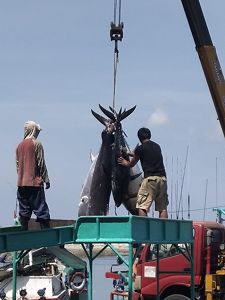

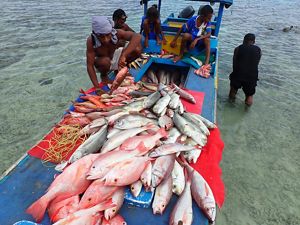
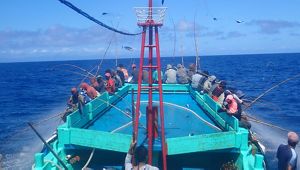
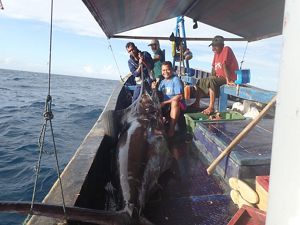

A Day's Haul: Yellowfin tuna catch at Bitung Ocean Fishing Port, North Sulawesi. © Harxylen K Purnomo/YKAN

Small-Scale Fisheries: Small boat 5GT, an example of small-scale fisheries in Indonesia. © YKAN

Sorting the Catch: Landing of caught fish by deep-sea grouper snapper using small-scale vessels. © YKAN

Pole and Line Fishing: Skipjack tuna (Katsuwonus pelamis) fishing activities using pole and line (Huhate) fishing gear in Bitung, North Sulawesi (WPP 715). © YKAN

Bitung Black Marlin Catch: Captain Yan Nurcholis (Bitung) KM. Fishermen 2017-953 took a photo with the Black Setuhuk fish (Makaira indica). © YKAN
Quote
The FishFace technology represents a breakthrough in collecting real-time, accurate data on catch results.
Addressing the second part of the problem, the taking of images, requires some innovation. Implementation of CODRS taught us that smartphones are not very efficient for routine picture taking, especially in a working environment on board, and YKAN therefore used pocket cameras. However, YKAN applied a smartphone camera linked to a trigger that is actuated as fish move through the field of vision of the camera. The challenge is to develop a smartphone-trigger combination that is flexible enough for use on different sizes of boats with varying deck layouts. To actuate the trigger, YKAN used a proximity sensor or a mechanical system. The advantage of using a smartphone is that uploading of data becomes easier. Furthermore, the solution can be integrated in the e-logbook system of the Indonesia Ministry of Marine Affairs and Fisheries, which is also smartphone-based.
The smartphone platform will also give YKAN the opportunity to report back to the fisher. The reports YKAN developed in the context of the CODRS program aimed at an audience of fishery managers and scientists, and these reports are not that useful for individual fishers. In the context of this proposal, YKAN plans to develop a smartphone-based dashboard that provides fishers with metrics on their fishing over the past months. These metrics may include catch quantity and composition, length of the fishing trip and the fisher's catch-per-unit-effort (CPUE) compared to the average CPUE of their peers. YKAN expects that these reports will increase acceptance of this technology by the fishers.
The FishFace technology represents a breakthrough in collecting real-time, accurate data on catch results. The information gathered establishes a baseline for assessing fishery stocks and provides valuable recommendations for designing sustainable fisheries management policies. These efforts contribute to the preservation of nature and biodiversity, particularly within the Indonesia fisheries sector.
Indonesia's Vital Role
Learn more about what TNC is doing to protect and bolster this important marine territory.
Explore the Work



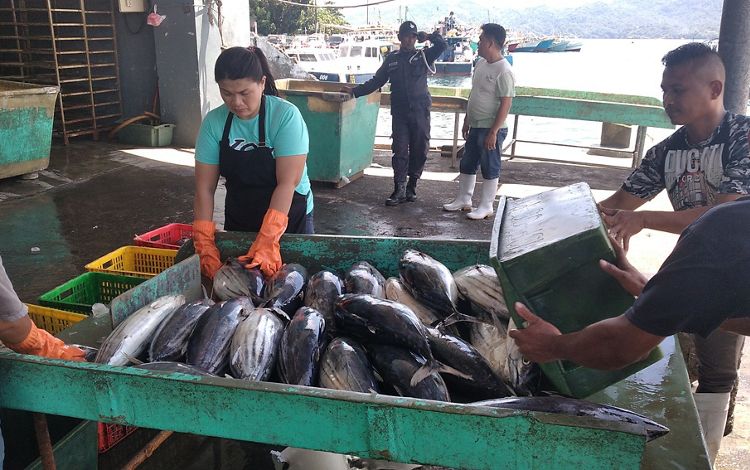
We Can’t Save Nature Without You
Sign up to receive regular updates from The Nature Conservancy.






